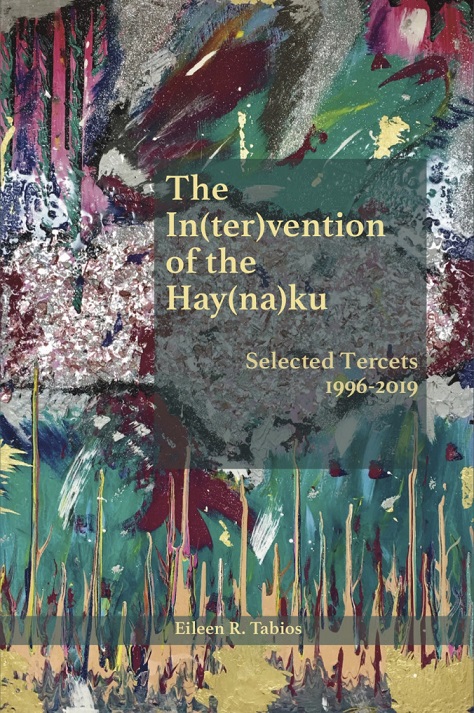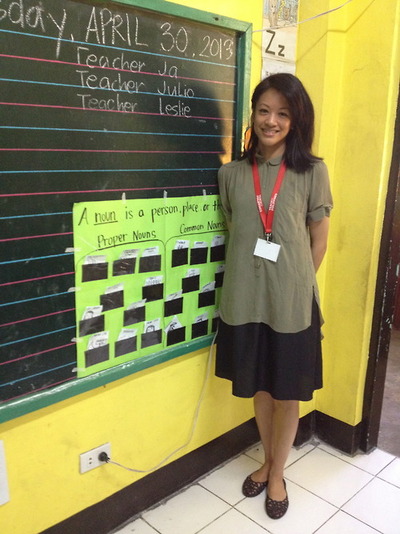Poet explores the tercets in new Haiku book
By Neil Leadbeater

The In(ter)vention of the Hay(na)ku: Selected Tercets 1996-2019 by Eileen R. Tabios
Marsh Hawk Press, New York, 2019
Consider the power of three. Throughout history, successful leaders have recognised its effectiveness and made good use of it in their writing and in their speeches. This is because having three entities can combine both brevity and rhythm while using the smallest amount of information to create a pattern. This is one of the reasons we should stop, look and listen to Eileen R. Tabios’ latest book of tercets (three-line stanzas) which is big, bold and beautiful. There is something satisfying about the number three. It is the number of creation and completion. Think of the Holy Trinity, past, present and future, beginning, middle and end, before, during and after…
The tercet was introduced into English poetry by Sir Thomas Wyatt in the 16th century. It was employed by Shelley and is the form used in Byron’s The Prophecy of Dante. The haiku appeared in Japan in the 13th century and was popularised by Bashō much later.
As the title of Tabios’ book suggests, its contents are not just invention but also an intervention: the insertion of something new between what has become familiar. It also carries with it the implication of improvement, of advancement in progress by a third party. Tabios’ explorations of the tercet culminates with the “hay(na)ku”—a poetic form named after a Filipino expression and based on a stanza where the first line is one word, the second line two words, and the third line three words.
Tabios’ tercets are presented in the chronological order of when they were written and cover a period of 23 years from 1996 to 2019. Tabios presents them in this manner because she views poetry as a process of continual development and change. Reviewing a book of this size, it is not possible to comment on every single poem and so I select a few to give the reader a flavour.
The series “Girl Singing” was inspired by Jose Garcia Villa’s poem, “Girl Singing. Day.” Each poem begins with the title which is then repeated on several occasions within each sequence like a recurring musical motif. Similarly, each poem ends with the phrase “Heaven / nearer than a breath away.” One of the joys in reading this set of poems is spotting the correspondences between each section which shifts considerably in terms of physical location and visual scope. The “outlook ever shifting always in flux” ranges from a focus on a single leaf outside a bedroom window to forest floors to supermarket parking lots to wider panoramas which take in the sweep of the Himalayas. The latter bears a compelling line, “Ancient mountains quivering like 500-pound Sumo wrestlers.” The one constant in all of this is the girl singing and the fact that it is day.
Tabios is a great believer in the power of revision. Her work is never “finished”—it is always a work in progress. She sifts and refines her words to find new ways to shape her craft. For her, this process of creating hybrids is a constant source of inspiration and regeneration. It’s all apt as good work requires attention and patience. Above all, it requires time in which to mature. The following lines from “Girl Singing” could well be applied to this process: “Sometimes, the perfect // pitch needs time. Like bottles of champagne / rotated in their racks, inch by inch / meticulously for months. Or cabernet settling // in oak barrels buried in underground caves. / Like basting Thanksgiving turkey for twelve / hours straight…”
The “Hay(na)ku Death Poems” were written, interestingly, in in the reverse hay(na)ku form—lines of three words, two words and one word—to visually manifest disappearance. Choosing which words come first can have the effect of changing the emphasis on each line. Compare:
“I wrote poems
as babies
suffered”
with
“Babies suffered as
I wrote
poems”
This important book shows why the hay(na)ku has become of interest to (and subject to new variations through collaborations with) other poets and artists around the world. Long lines have given way to short lines which place a greater emphasis on the crucial placement of each word within each poem, rules have been broken to accommodate fresh ideas, and with it all has come an increasing tendency to invite the reader to make his or her own response, to become a part of the poem itself. Recommended.
Neil Leadbeater is an author, essayist, poet and critic living in Edinburgh, Scotland. His short stories, articles and poems have been published widely in anthologies and journals both at home and abroad. His publications include ‘Librettos for the Black Madonna’ (White Adder Press, 2011); ‘The Worcester Fragments’ (Original Plus, 2013); ‘The Loveliest Vein of Our Lives’ (Poetry Space, 2014), ‘Finding the River Horse’ (Littoral Press, 2017) and ‘Punching Cork Stoppers’ (Original Plus, 2018). His work has been translated into several languages.


(C) The FilAm 2020











